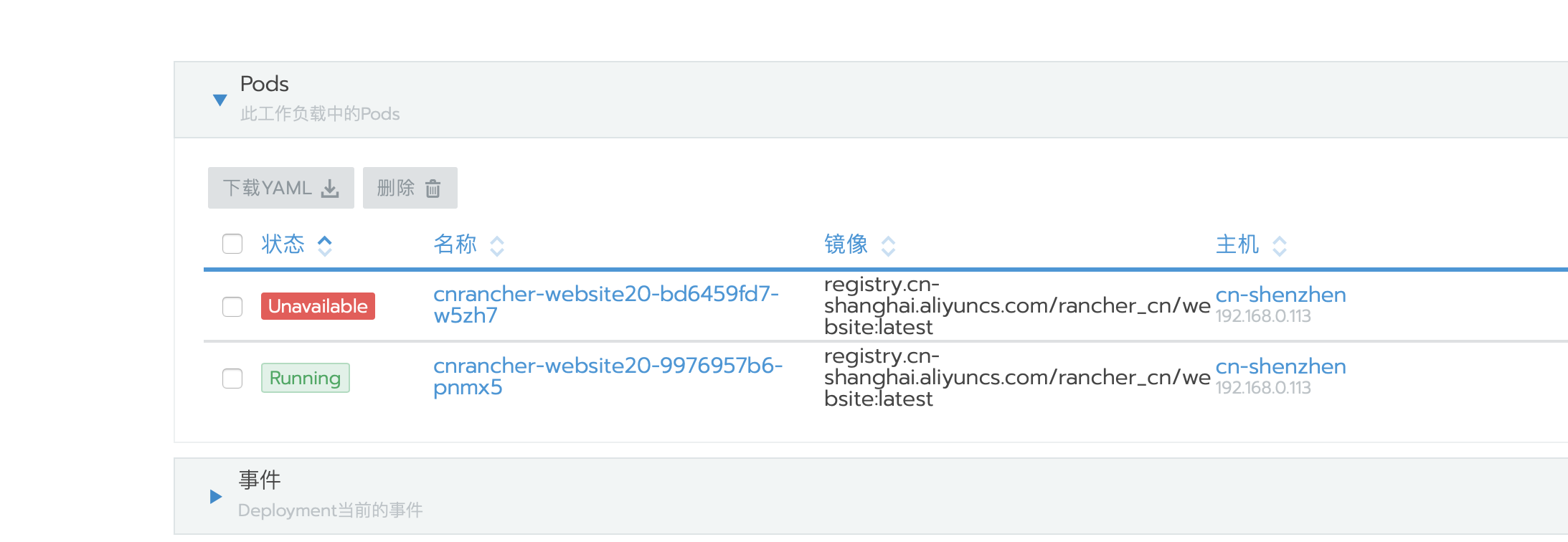通过 webhooks 自动更新应用
本文永久链接: https://www.xtplayer.cn/rancher/webhooks/
当流水线构建完镜像并成功推送到镜像仓库后,根据一些业务需求,可能希望自动去更新相应的应用。目前 rancher 2.x 自身不支持这样的自动触发更新的功能,所以需要一个附加的组件去触发自动更新。
简述
本工具基于 https://github.com/adnanh/webhook.git 定制, Dockerfile 地址: https://github.com/cnrancher/docker-webhook.git。
镜像下载地址: registry.cn-shenzhen.aliyuncs.com/rancher/webhook:latest
支持镜像仓库类型:
阿里云镜像仓库:
https://cr.console.aliyun.com
Docker Hub:http://hub.docker.com
自定义 webhooks(比如 harbor)支持邮件通知
准备配置文件
建议把 webhooks 作为系统服务运行在
system项目下。
登录 Rancher UI 切换到
system项目下,然后依次进入资源\配置映射,点击页面右上角的添加配置映射。修改模板中对应的参数:
<webhooks_id>: 此webhooks-id具有唯一性,不能重复。建议设置为服务名,比如cnrancher_website;<token>: 设置一个 token 值用于匹配校验;<workload>: 指定一个应用,书写格式为类型/Workload,例如:deployment/webhooks、daemonset/webhooks;<namespaces>: 指定服务所在的命名空间;<container>: 指定容器名称,对于一个有多容器的 Pod,升级时需要指定容器名称;<MAIL_TO>: 收件人邮箱地址;<NET_TYPE>: 如果阿里云的镜像仓库,可在 url 中添加net_type指定网络类型: 1.公共网络: 不指定默认为公共网络,2.专有网络:net_type=vpc,3.经典网络:net_type=internal;
[
{
"id": "<webhooks-id>",
"execute-command": "/webhooks.sh",
"command-working-directory": "/home",
"response-message": "I got the payload!",
"include-command-output-in-response": true,
"include-command-output-in-response-on-error": true,
"trigger-rule-mismatch-http-response-code": 500,
"response-headers":
[
{
"name": "Access-Control-Allow-Origin",
"value": "*"
}
],
"pass-arguments-to-command":
[
{
"source": "entire-payload"
}
],
"pass-environment-to-command":
[
{
"envname": "APP_NS",
"source": "url",
"name": "ns"
},
{
"envname": "APP_WORKLOAD",
"source": "url",
"name": "workload"
},
{
"envname": "APP_CONTAINER",
"source": "url",
"name": "container"
},
{
"envname": "REPO_TYPE",
"source": "url",
"name": "repo_type"
},
{
"envname": "NET_TYPE",
"source": "url",
"name": "net_type"
},
{
"envname": "MAIL_TO",
"source": "string",
"name": "<MAIL_TO>"
}
],
"trigger-rule":
{
"and":
[
{
"match":
{
"type": "value",
"value": "<token>",
"parameter":
{
"source": "url",
"name": "token"
}
}
},
{
"match":
{
"type": "value",
"value": "<namespaces>",
"parameter":
{
"source": "url",
"name": "ns"
}
}
},
{
"match":
{
"type": "value",
"value": "<workload>",
"parameter":
{
"source": "url",
"name": "workload"
}
}
},
{
"match":
{
"type": "value",
"value": "<container>",
"parameter":
{
"source": "url",
"name": "container"
}
}
}
]
}
}
]填写
添加配置映射参数,其中:名称: 可以随意填写;键: 以.json结尾的文件名,比如cnrancher.json;值: 设置为上一步中修改的配置文件;- 如果有多个服务,可以添加多个键值对,如图:
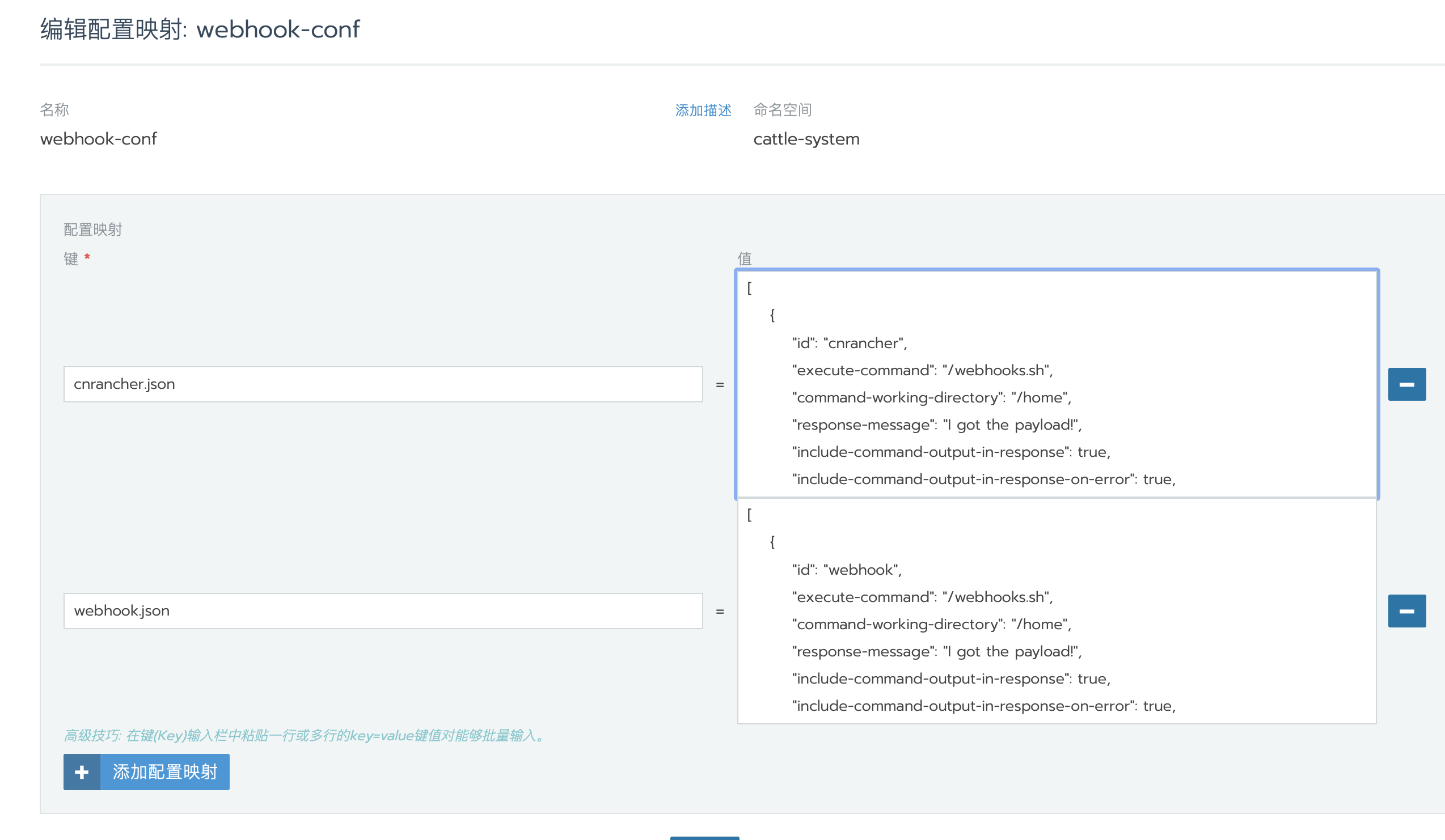
webhooks 安装
依次点击 system 项目\工作负载\工作负载,点击右侧部署服务。
配置服务名称和镜像
registry.cn-shenzhen.aliyuncs.com/rancher/webhook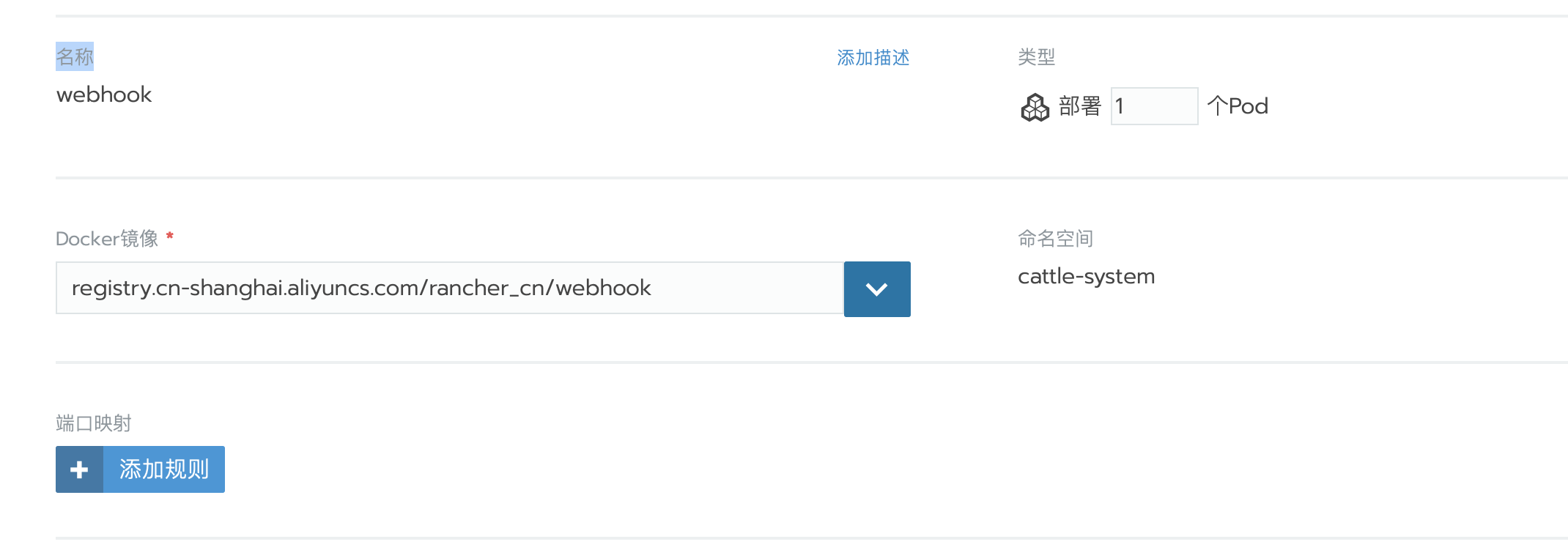
对外服务
- 服务默认监听端口为
9000,如果使用 NodePort 提供服务,则安以下方式配置;

- 如果使用负载均衡服务,在负载均衡页面添加相应规则,如果使用 https,记得配置 ssl 证书;
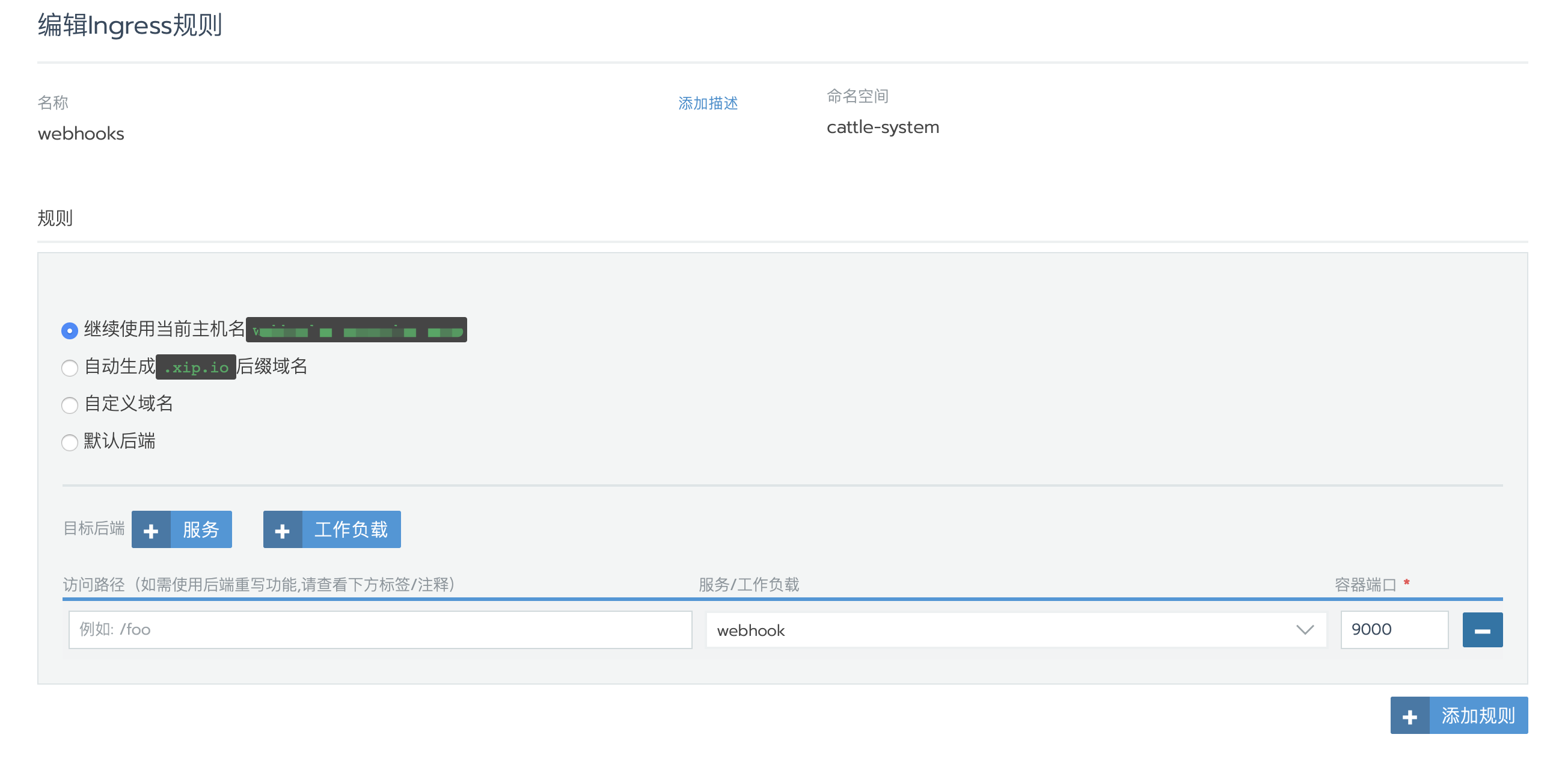
- 服务默认监听端口为
配置环境变量
WEBHOOK_CMD=-template: 系统命令;MAIL_SMTP_PORT=: 邮箱 SMTP 服务器端口;MAIL_SMTP_SERVER=: 邮箱 SMTP 服务器地址,(需要 base64 加密: echo <SMTP 服务器地址> | base64 );MAIL_FROM=: 发件人邮箱,(需要 base64 加密: echo <发件人邮箱> | base64 );MAIL_PASSWORD=: 发件人邮箱密码,(需要 base64 加密: echo <密码> | base64 );MAIL_CACERT=: 自签名 CA 证书,邮箱服务器采用自签名 ssl 证书时使用(需要 base64 加密: cat <ca 文件> | base64 );MAIL_TLS_CHECK=: 是否开启 TLS 认证(false/true,默认 true);请以文字说明为准,图片是早期版本截图,图片中有些地方未做 base64 加密
- 常用邮箱配置(qq,163 等)
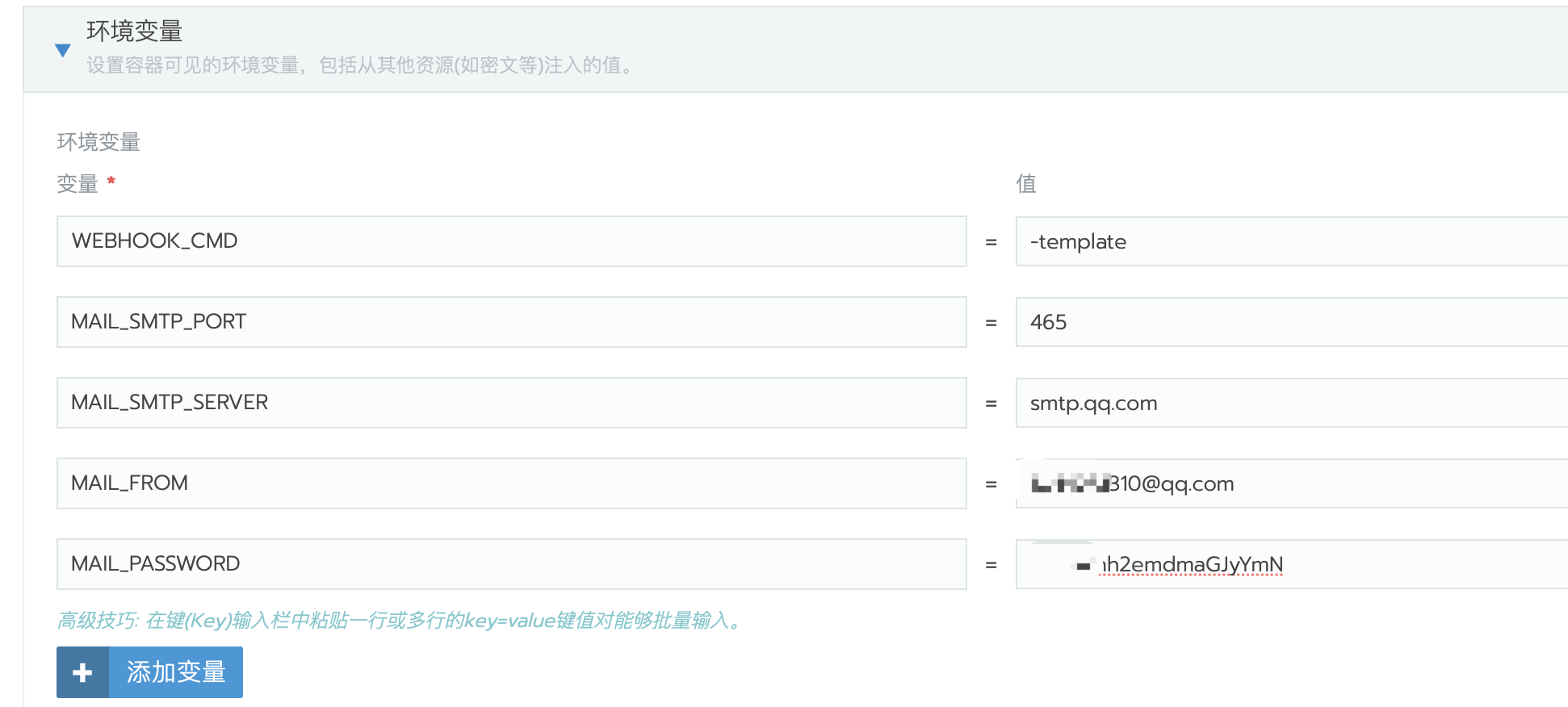
- 自签名证书邮箱服务器
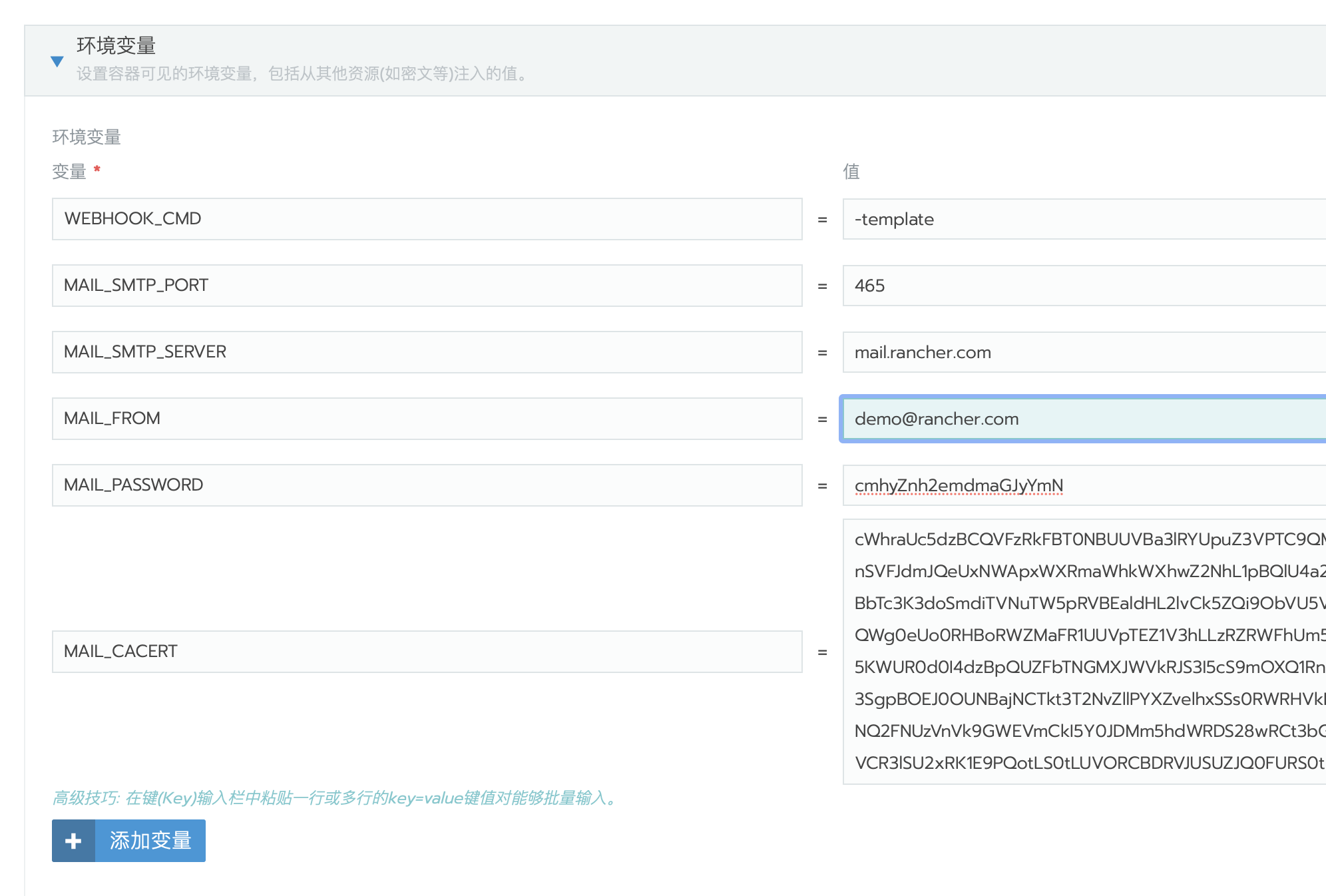
- 不启用 TLS 认证邮箱
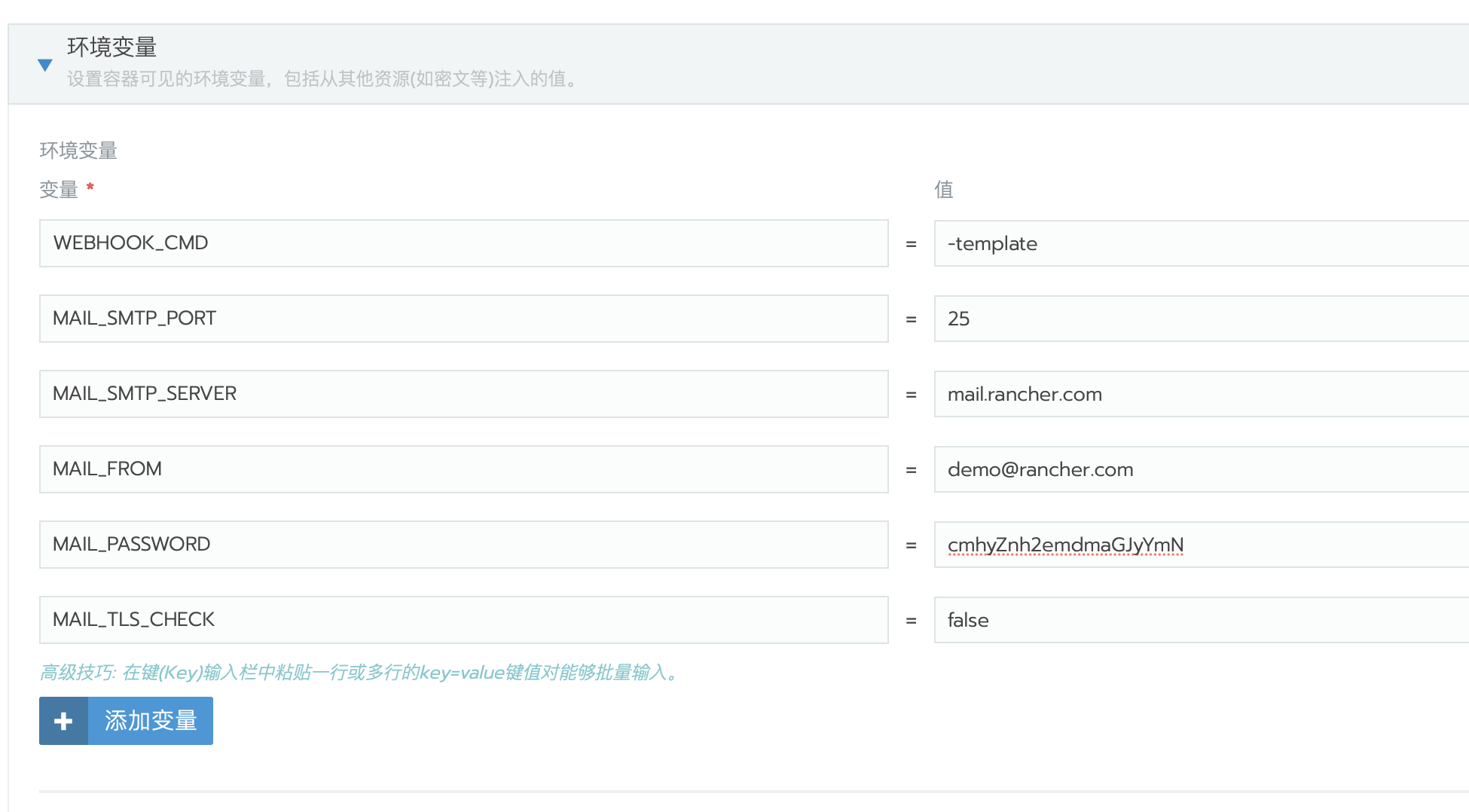
配置健康检查
端口:
9000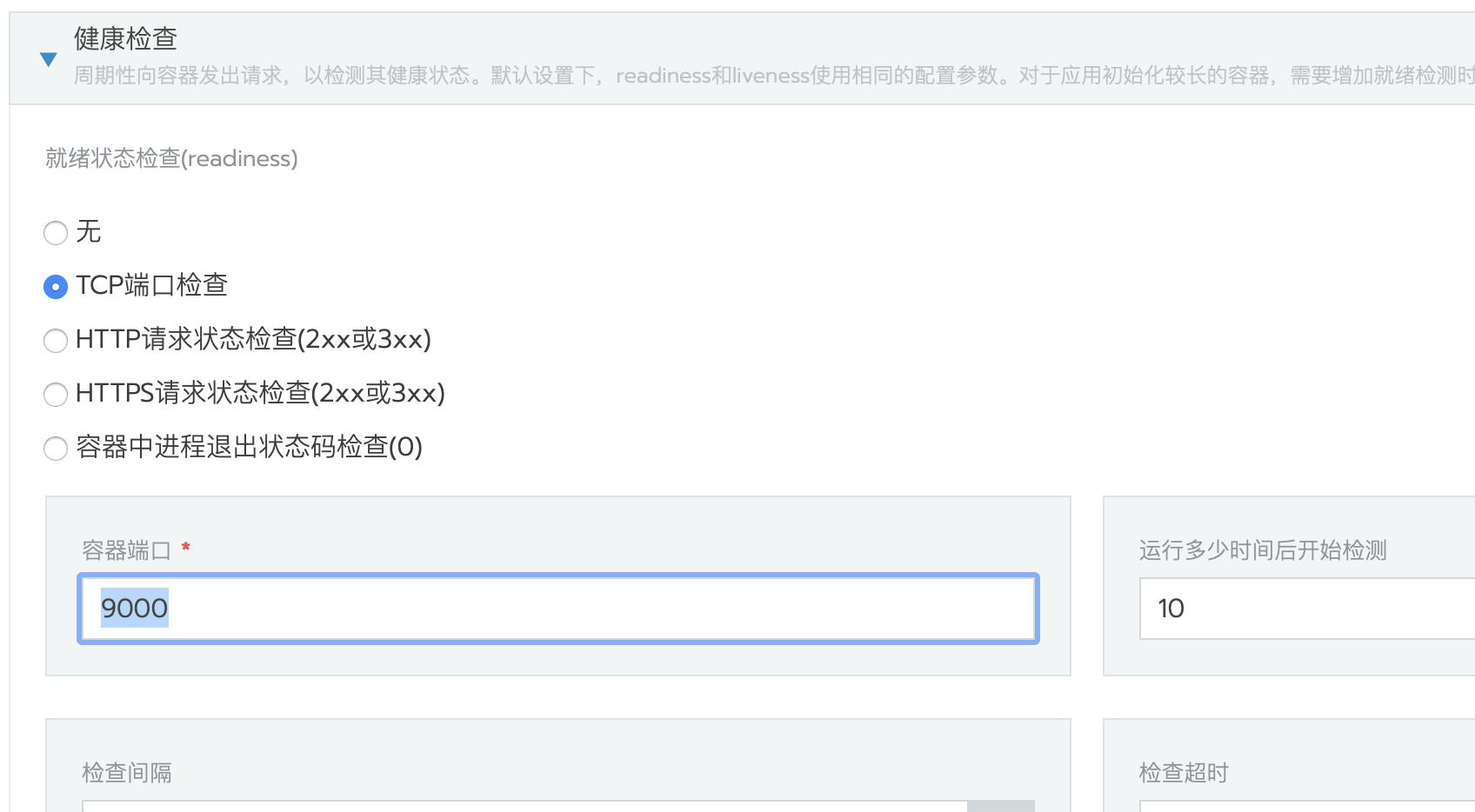
配置数据卷
- 选择配置映射卷
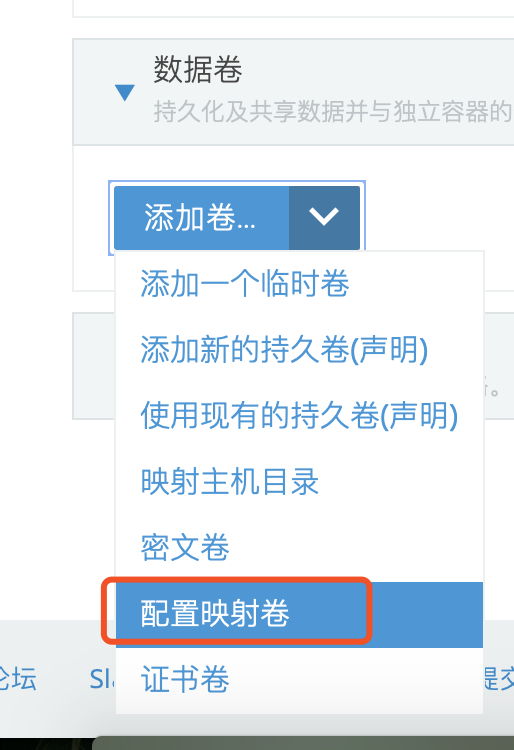
- 配置映射名: 选择前面创建的配置映射;
- 容器路径:
/etc/webhook/source; - 其他参数保持默认;
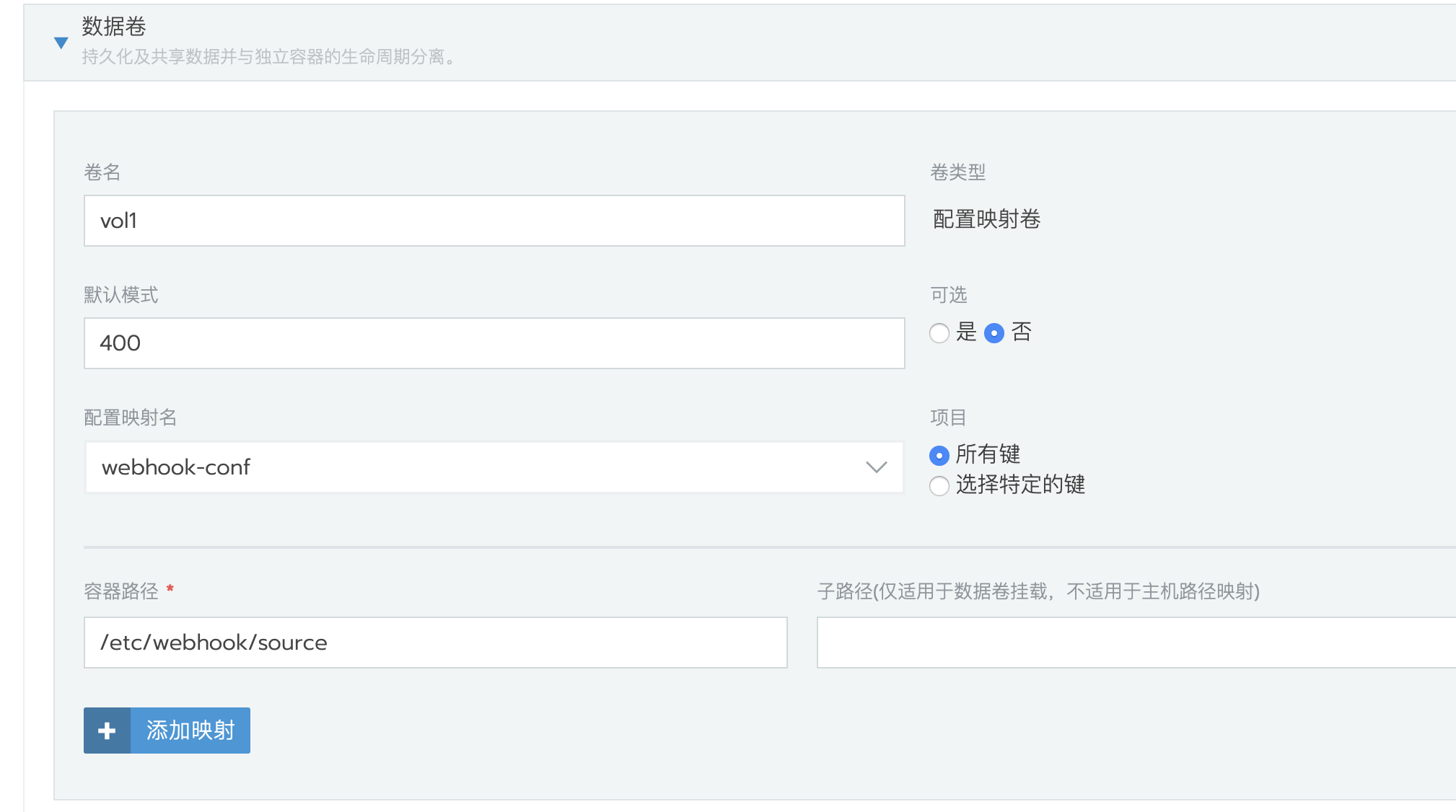
最后点击启动,启动后查看日志,可以看到当前监听的服务
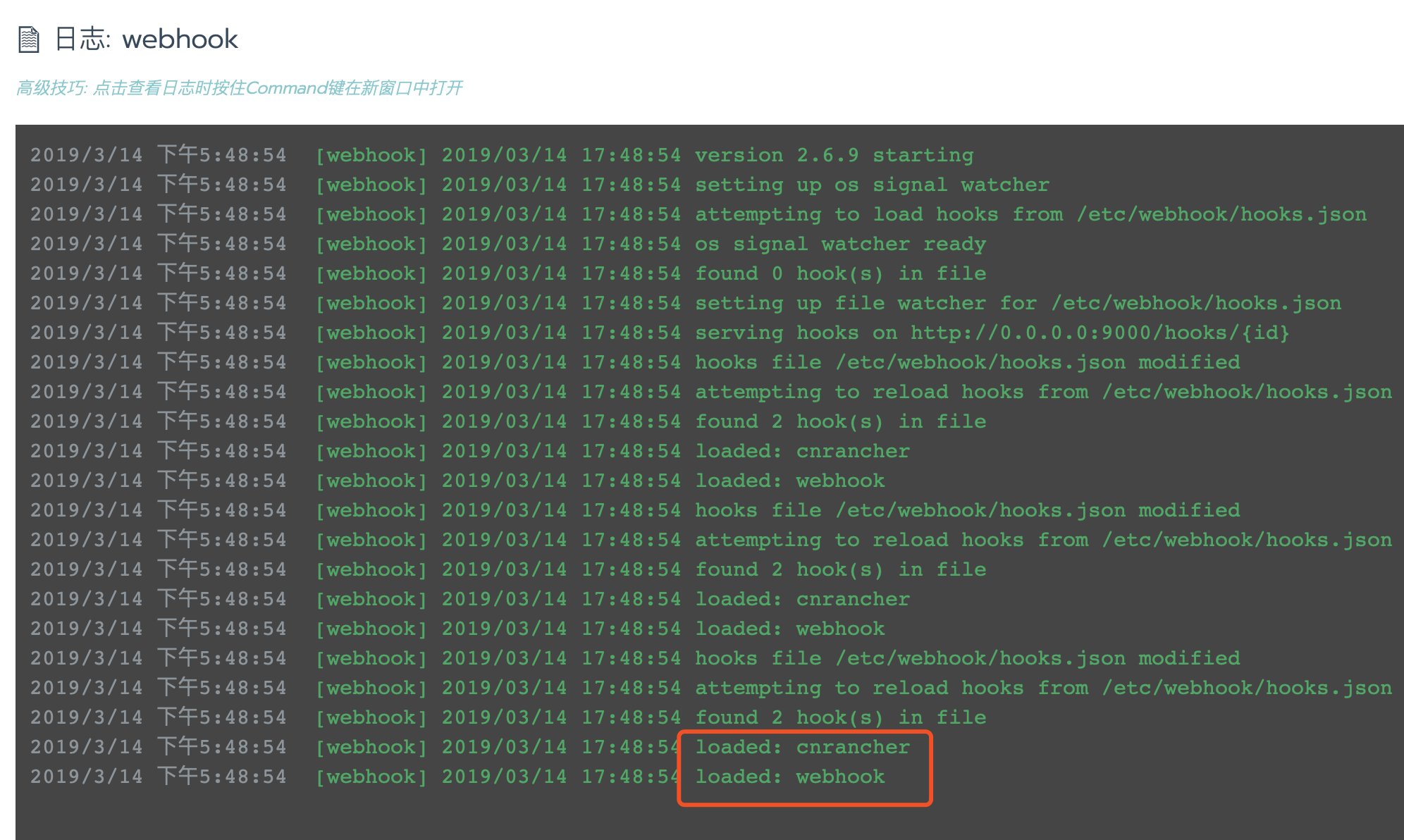
设置
serviceaccounts这一步相对比较重要,webhooks 服务需要
serviceaccounts才可以正常的与 K8S 通信。因为目前 Rancher UI 不支持设置serviceaccounts,所以需要编辑yaml文件来配置serviceaccounts。为了方便,这里复用了 rancher 组件使用的serviceaccounts账号cattle,具有集群管理员角色,您也可以根据需要定制serviceaccounts角色。- 如图,选择
查看/编辑 YAML
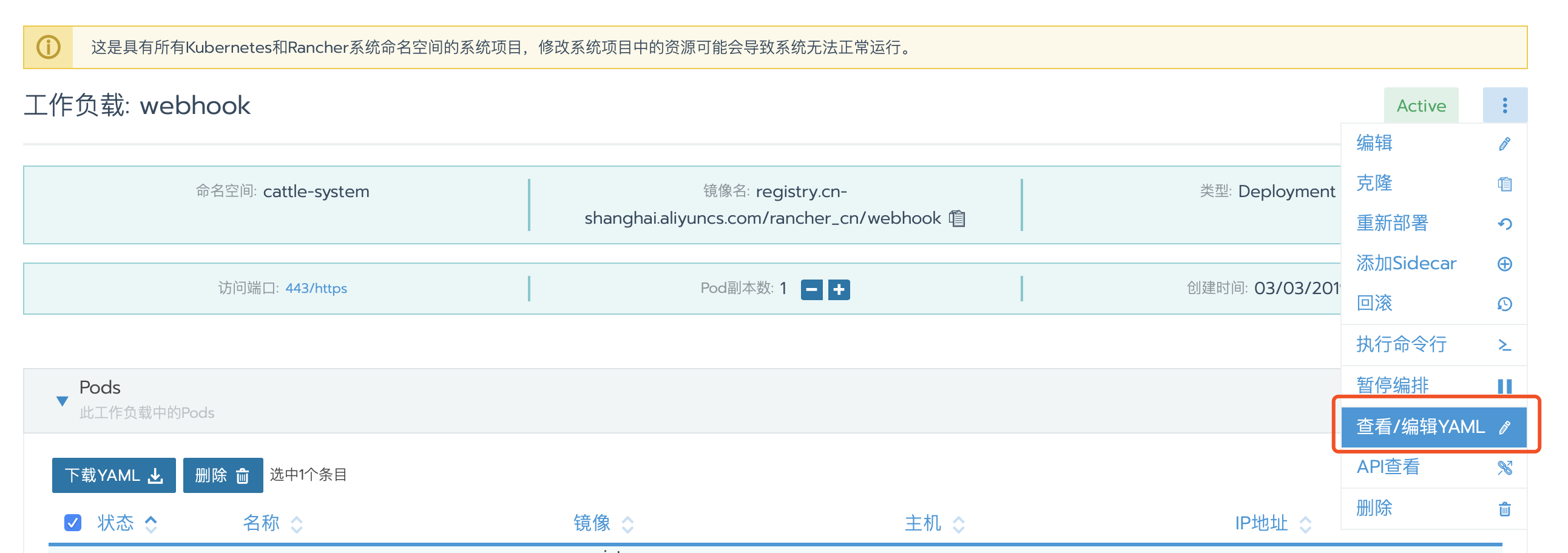
- 在
securityContext: {}下边添加serviceAccount: cattle和serviceAccountName: cattle;
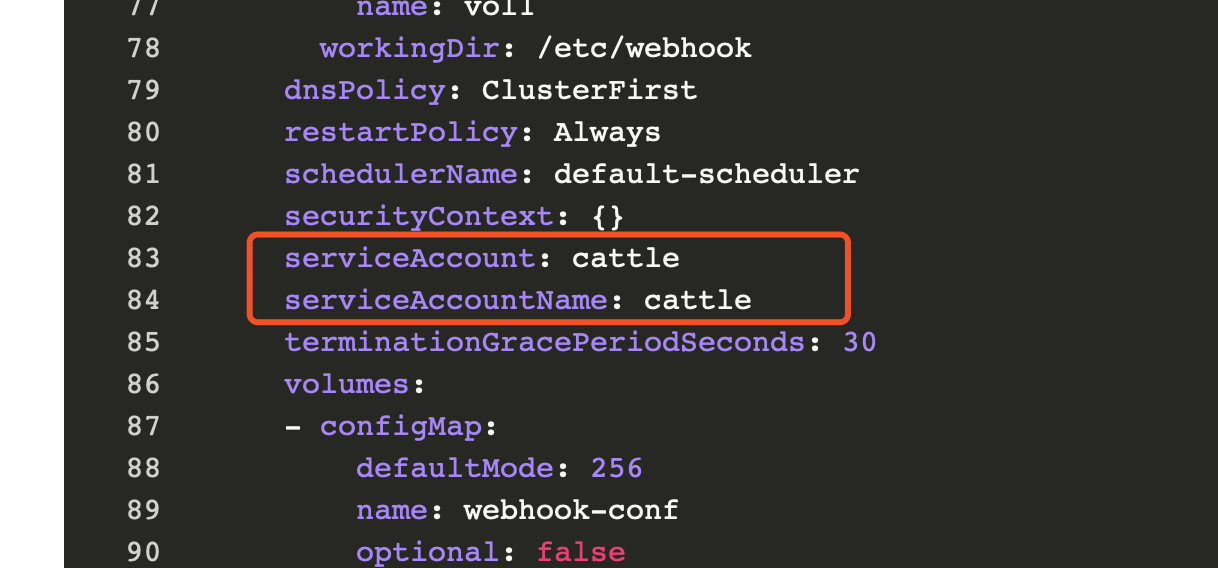
- 最后点击
保存
- 如图,选择
webhooks 触发地址
http(s)://<webhooks_url>/hooks/\ |
如果是阿里云的镜像仓库,可在 url 中添加
net_type指定网络类型:公共网络:
如果不指定,则默认为公共网络拉取镜像
专有网络:
net_type=vpc经典网络:
net_type=internal
其中
<webhooks_id>、<namespaces>、<workload>、<container>对应模板中的参数,<repo_type>支持:aliyun、dockerhub、custom。
配置仓库触发
Aliyun
浏览器访问
https://cr.console.aliyun.com进入容器镜像服务管理界面;选择一个需要添加自动触发功能的仓库,点击右侧的管理;
在切换的新窗口左上角选择触发器;
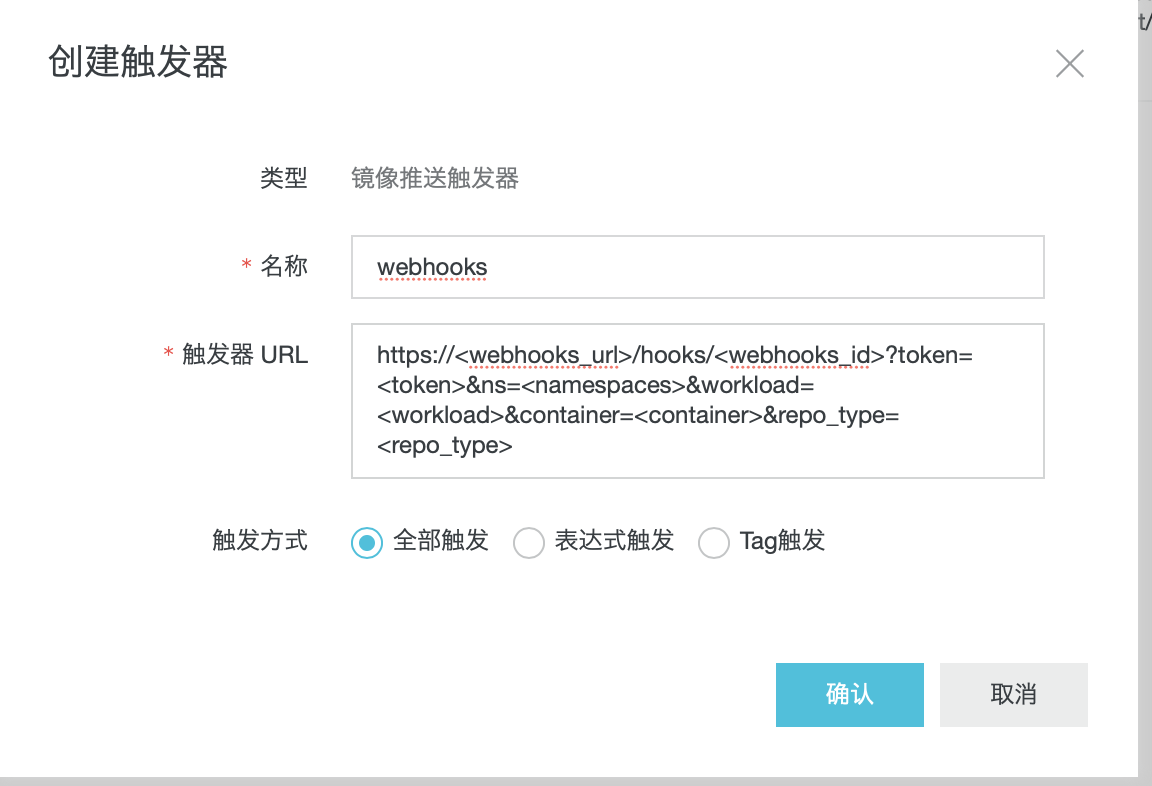
webhooks 触发消息示例:
{
"push_data": {
"digest": "sha256:f66daa126e9fcac4e2d0b7131e78ffd5d8e0012a1e6cb150a953e5be8da5d 980",
"pushed_at": "2019-03-13 23:38:07",
"tag": "latest"
},
"repository": {
"date_created": "2019-03-05 13:47:43",
"name": "webhook",
"namespace": "rancher_cn",
"region": "cn-shanghai",
"repo_authentication_type": "NO_CERTIFIED",
"repo_full_name": "rancher_cn/webhook",
"repo_origin_type": "NO_CERTIFIED",
"repo_type": "PUBLIC"
}
}
Docker
浏览器访问
https://cloud.docker.com/repository/list,输入账号和密码后将进入仓库列表;点击需要添加 webhooks 仓库,然后点击 webhooks;

填写相关参数,点击右侧的加号;

webhooks 触发消息示例:
{
"push_data": {
"pushed_at": 1552553567,
"images": [],
"tag": "latest",
"pusher": "hongxiaolu"
},
"callback_url": "",
"repository": {
"status": "Active",
"description": "iperf3",
"is_trusted": true,
"full_description": "# iperf3\niperf3\n",
"repo_url": "",
"owner": "hongxiaolu",
"is_official": false,
"is_private": false,
"name": "iperf3",
"namespace": "hongxiaolu",
"star_count": 0,
"comment_count": 0,
"date_created": 1540013520,
"dockerfile": "# ",
"repo_name": "hongxiaolu/iperf3"
}
}
自定义 webhooks
如果是使用 Jenkins 自定义构建镜像,可以设置 repo_type=custom。
在 Jenkins 构建 task 中,在镜像 push 操作后增加一个执行 shell 命令的步骤。这个操作主要是在镜像成功推送到镜像仓库后发出 POST 消息去触发 webhooks,这步中需要把上一步推送的镜像仓库地址,镜像命名空间,镜像名,以及镜像 tag 作为变量传递到这一步,这样在发送 POST 消息才可以把相关的镜像信息传递给 webhooks,从而触发服务升级。
示例 POST 消息:
curl -X POST \ |
触发 webhooks
配置完以上参数,提交代码到 git 仓库后将会自动触发阿里云仓库或者 dockerhub 的自动构建,创建自动构建方法请自行查阅相关文档。
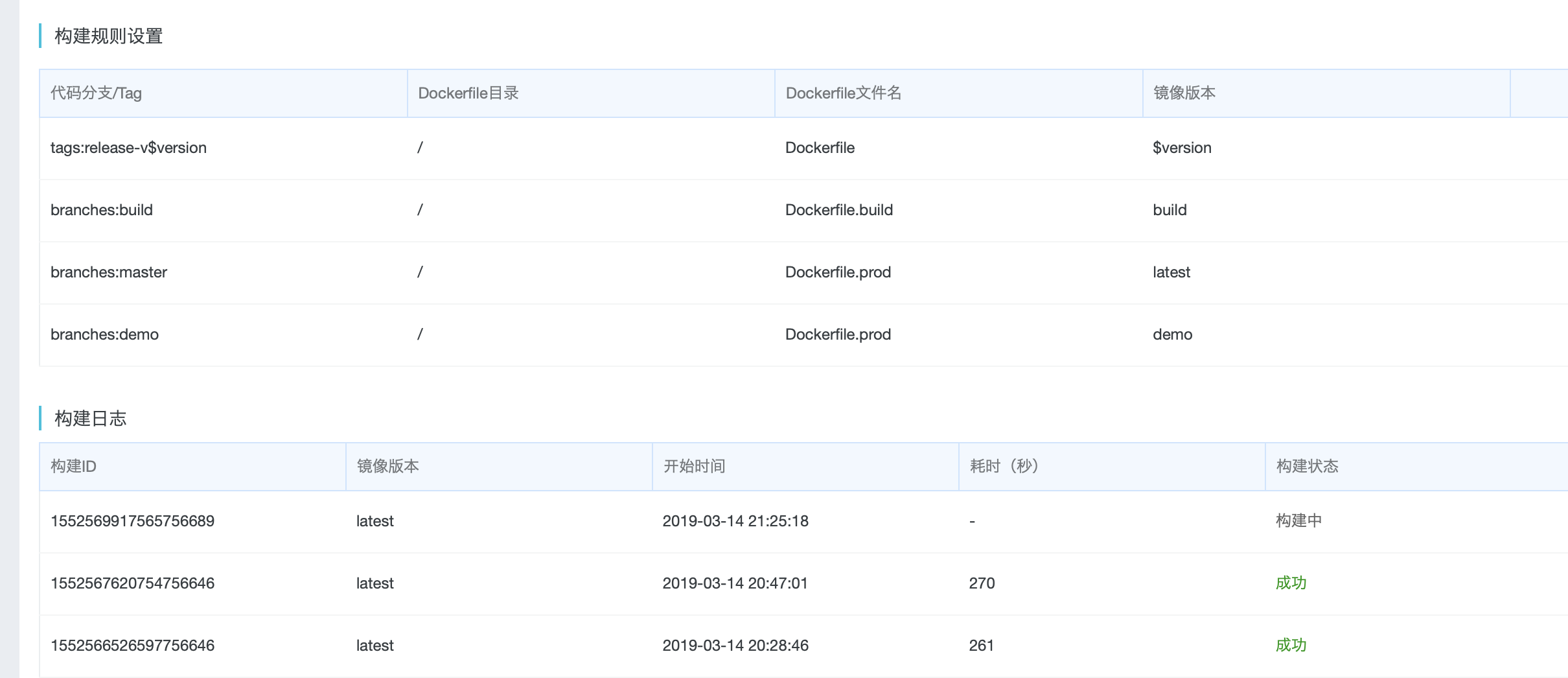
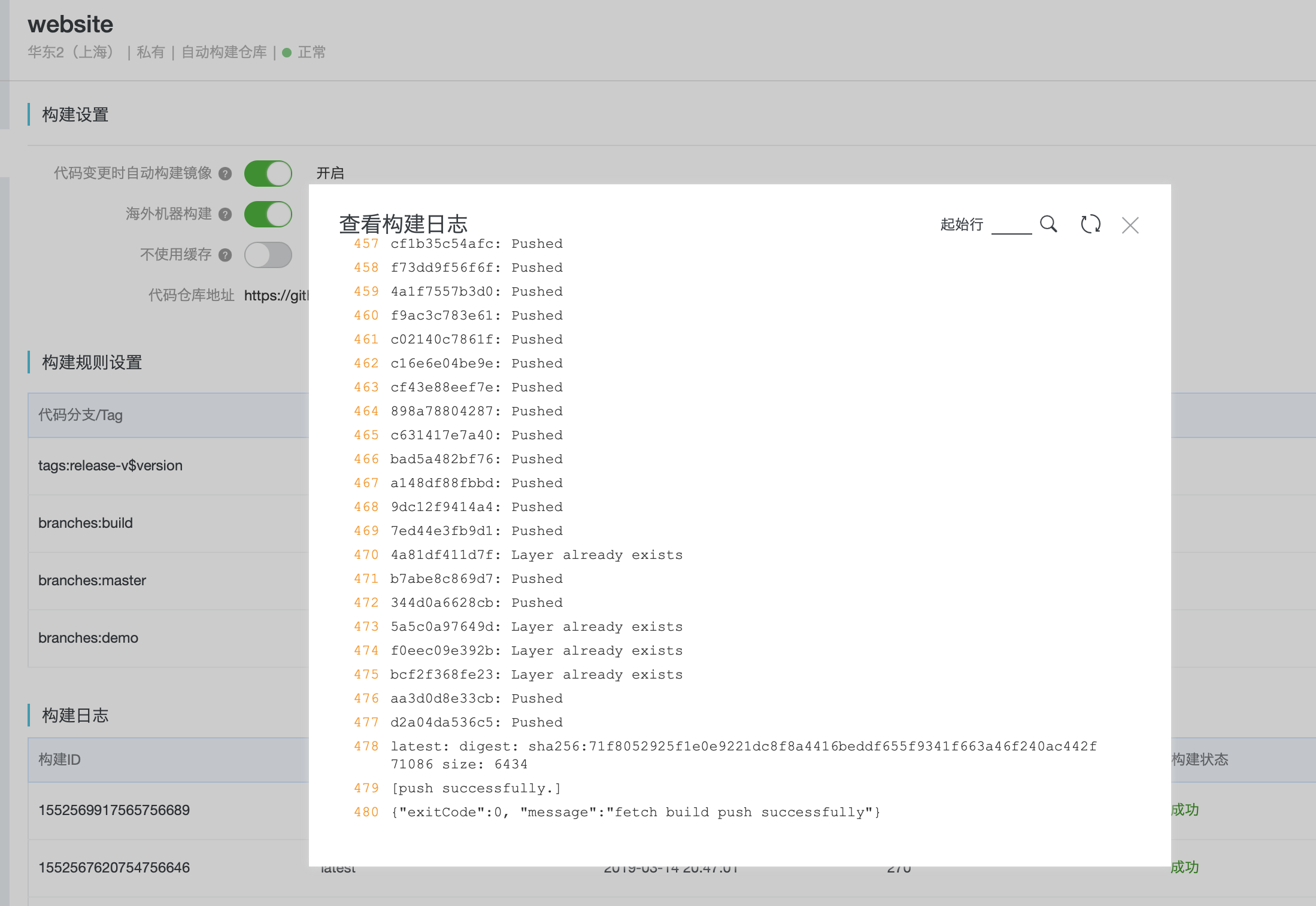
当镜像构建完成并推送到仓库后,会触发 webhooks 消息到预先配置的地址,从触发器也可以查看历史记录。
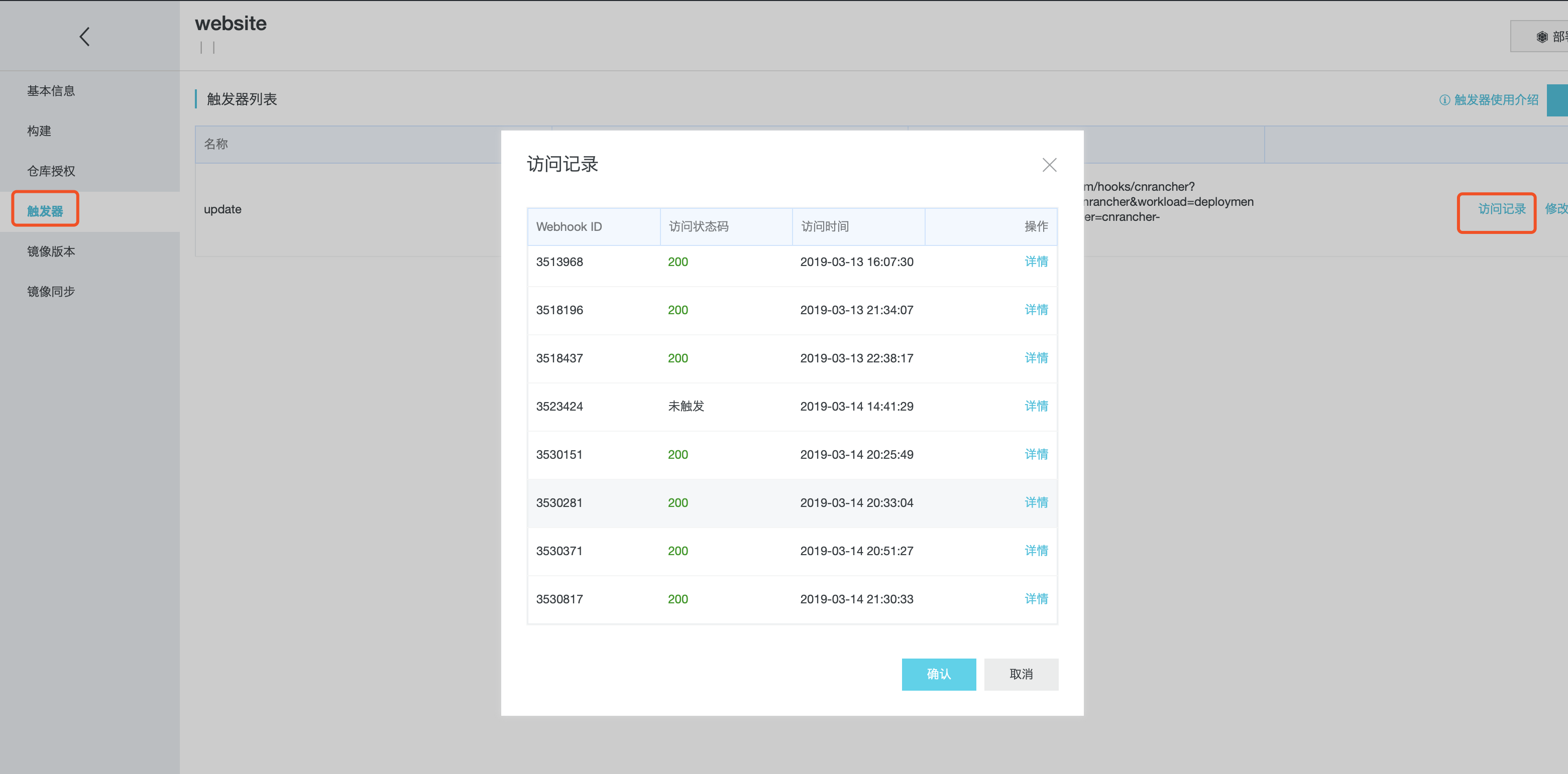
webhooks 服务收到消息后,会马上触发服务的升级。查看 webhooks 服务的日志,可以看到已经成功升级。
